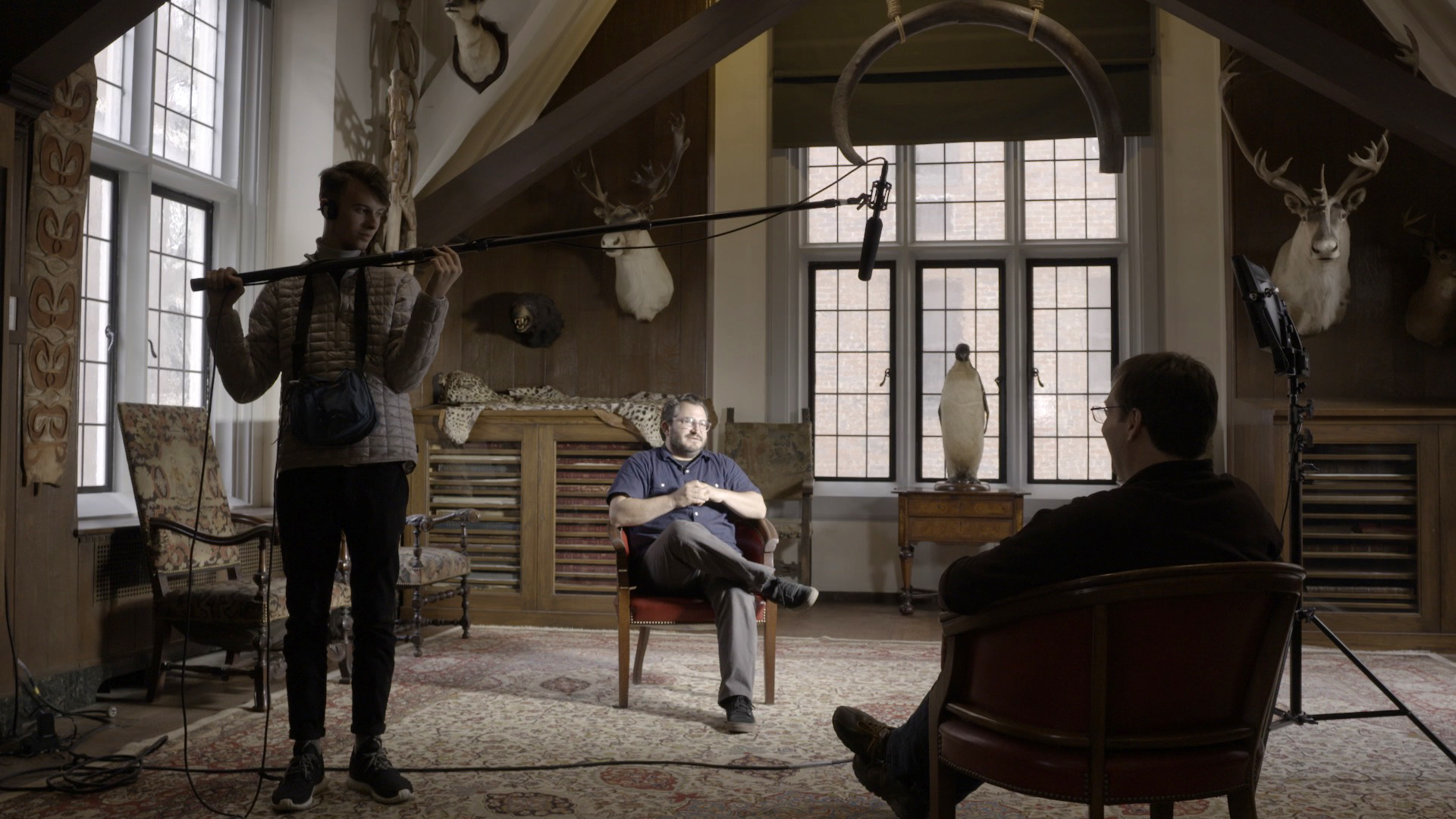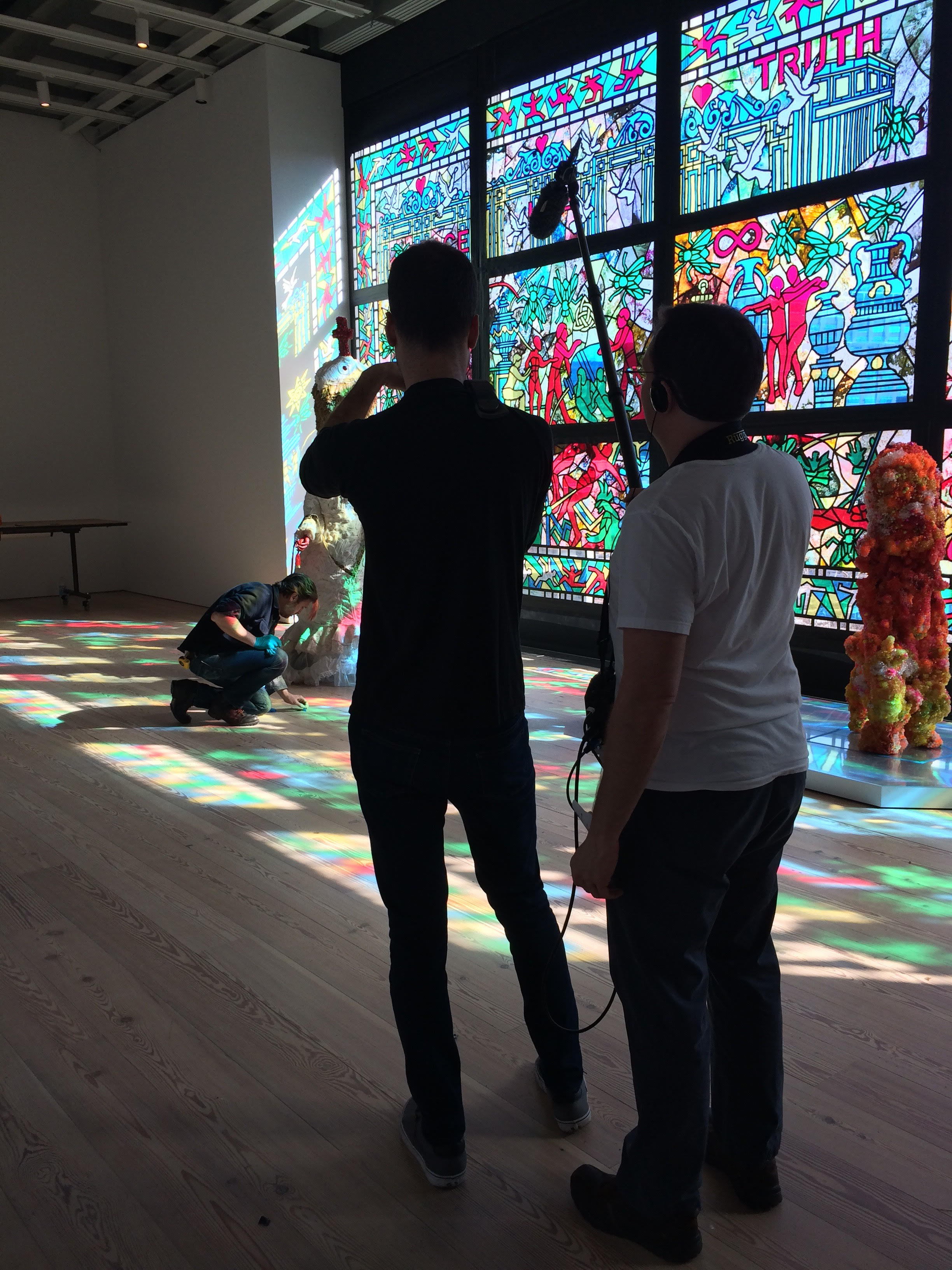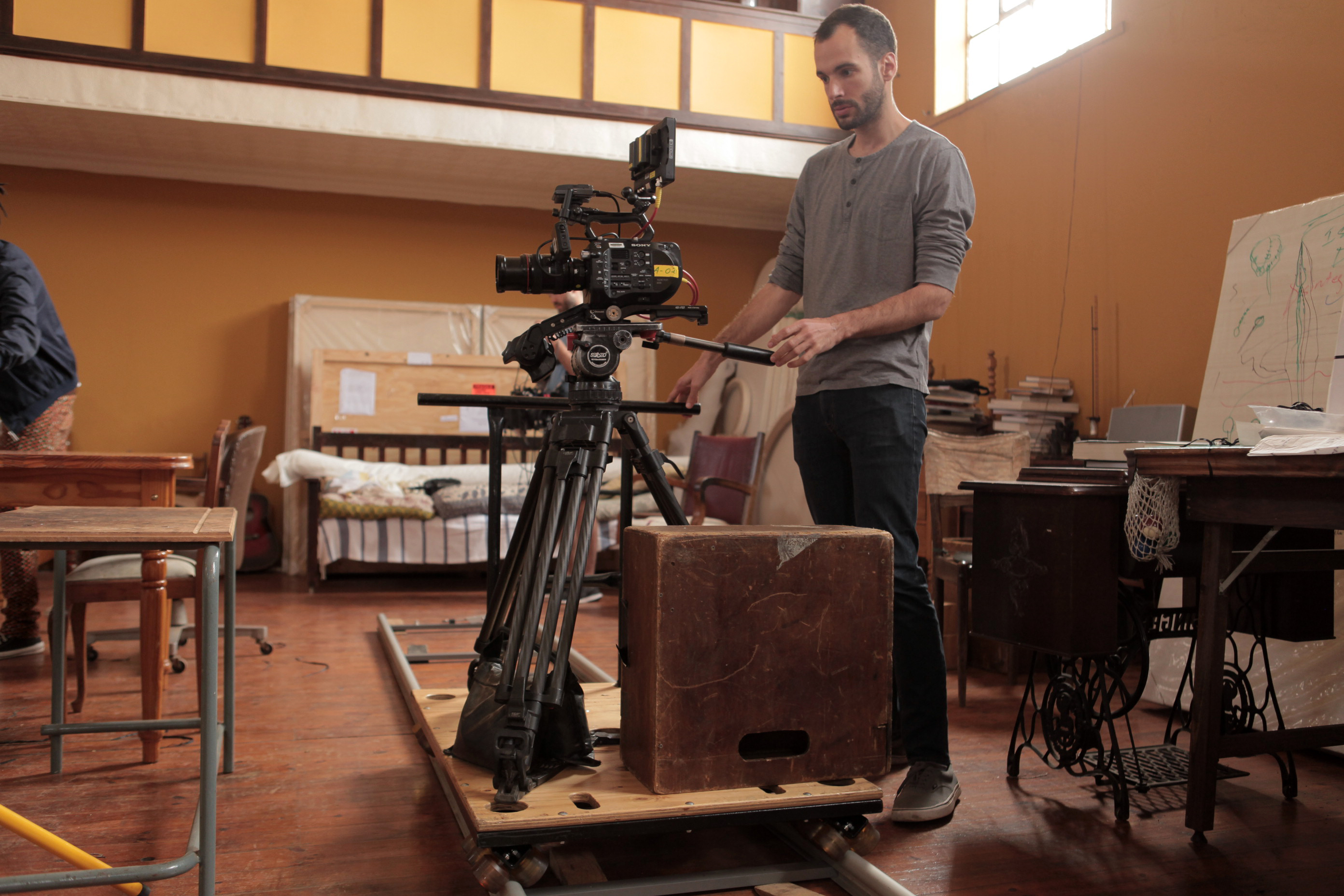
Art21 Director of Video Programming and Production Nick Ravich interviews artist David Brooks at the Explorer’s Club in New York for the New York Close Up episode “David Brooks Hits the Pavement.”
It’s funny how you can do something for what feels like a long time—in my case, documentary-film production for fifteen years—and never quite understand why you continue you do it. The work certainly doesn’t pay well. Our society tolerates it as part of the overall television and movie landscape and sometimes honors particular examples.
Deep down, I think I have continued to do it because I love true stories. I love hearing them from other people. I love seeing them portrayed in movies and TV. I love the inherent promise of true stories: this thing happened, it happened to these real people, it is now part of our history and culture, and my experience of the world now has to account for it. But beyond that, I have a different and, I guess, contradictory feeling, a fascination: with the lies we use to tell the truth; with the slipperiness between whatever happened (or is happening) and how it’s told; with the seemingly infinite spectrum of choices that filmmakers and their subjects have in representing their stories; with the license that the word inspired—as in the phrase “inspired by a true story”—evokes.

Ian and Nick filming Raúl de Nieves’s installation for the 2017 Whitney Biennial, for the New York Close Up film, “Raúl de Nieves is an American Artist.”
Having been a part of Art21 for ten-plus years (a lot of them with my co-editor, Ian Forster), I’ve had the privilege of being on Skype calls, in the field, and in the edit room when these choices are made and their consequences wrestled with. Do we follow an artist’s creative process as it happens (i.e., as it was originally planned, with or without our involvement), or would it be better to reenact it? Is there some unacceptable level of inauthenticity in that reenactment? If there’s no discernible difference to the viewer, then does it matter? Should it matter to the artist? Is the art that comes out of the original process more truthful than the art that comes out of the reenactment? Interestingly, a number of artists over the years have told me that they were surprised by how much they liked a particular artwork that they created while being filmed, despite their assumption that the work would in some way be lesser or counterfeit.
Art21 has come to define a certain way of truth telling: particularly, prioritizing the voice of the artist. I think this artist-focused approach generates a sense of not just direct access to the artist’s process but also a feeling of a shared mind space, that we’re inside the heads of the artists, that we’re seeing the work and the world through their eyes—a kind of truth in itself.
I don’t have any particularly helpful answers to the questions above. The boring truth about the truth is that the answers are contingent on the specifics of the artist, the particular moment we find them in, and the energy and imagination (or lack thereof) of the filmmakers involved. And maybe it’s that contingency that has not only kept me engaged in this work over the years but also proves the truth. If every film told the story of an artist in the same presumably truthful way, wouldn’t we be telling the biggest untruth of all? The relentless variety of contemporary art and of creative people in general—the million little truths—demands to be told in a million different ways.
—Nick Ravich
As a documentary filmmaker, I seek the truth. When I interview a subject, I rarely feel as though I’m being lied to. I make films about art, after all, and a sense of emotional honesty is what I’m after. The truth is not so much about what is being said but rather how it’s being said. The same goes for how an artist behaves on camera. I sometimes ask myself, “Are they faking it because the crew and I are here?” Then I remind myself that perhaps a more important question is, “Will it look fake to the viewer?”
Audiences have different expectations for documentary films than for other genres. We’re constantly captivated by the artifice of feature films, and the fact that the scenes are scripted and staged doesn’t stop us from becoming engaged by the stories. When we look at a painting, we know we’re looking at oil on linen, but we allow ourselves to be transported beyond the materials. When employing movie magic in a documentary film, one must be more careful. Our viewers expect the featured artists to reveal their unmediated selves (and it’s my goal to deliver on that expectation), but filmmaking can only provide a certain perspective. By asking an artist to repeat an action so that I can capture it from a different angle, I may be able to show more of that artistic process, but I also run the risk of distracting the audience and taking them out of what seems to be an authentic experience, if the repeated action appears out of place.
Sometimes it’s necessary to acknowledge the artifice of a situation, as Joan Jonas did in an Extended Play episode. “I don’t think that you could ever really capture what it’s like for an artist to be alone working on their work in the studio,” she said. “It’s always a setup.” She’s absolutely right; just bringing a camera into her studio takes us a step away from how she might work when alone, and we can never know what might be different—the truth we might be missing. But by saying that, Jonas was able to convey a different kind of truth.
Just as there are many truths, there are many ways to convey them. In this issue of Art21 Magazine, we look at how artists and filmmakers explore that murky territory between truth and fiction and how artifice can be used to achieve honesty.
—Ian Forster




